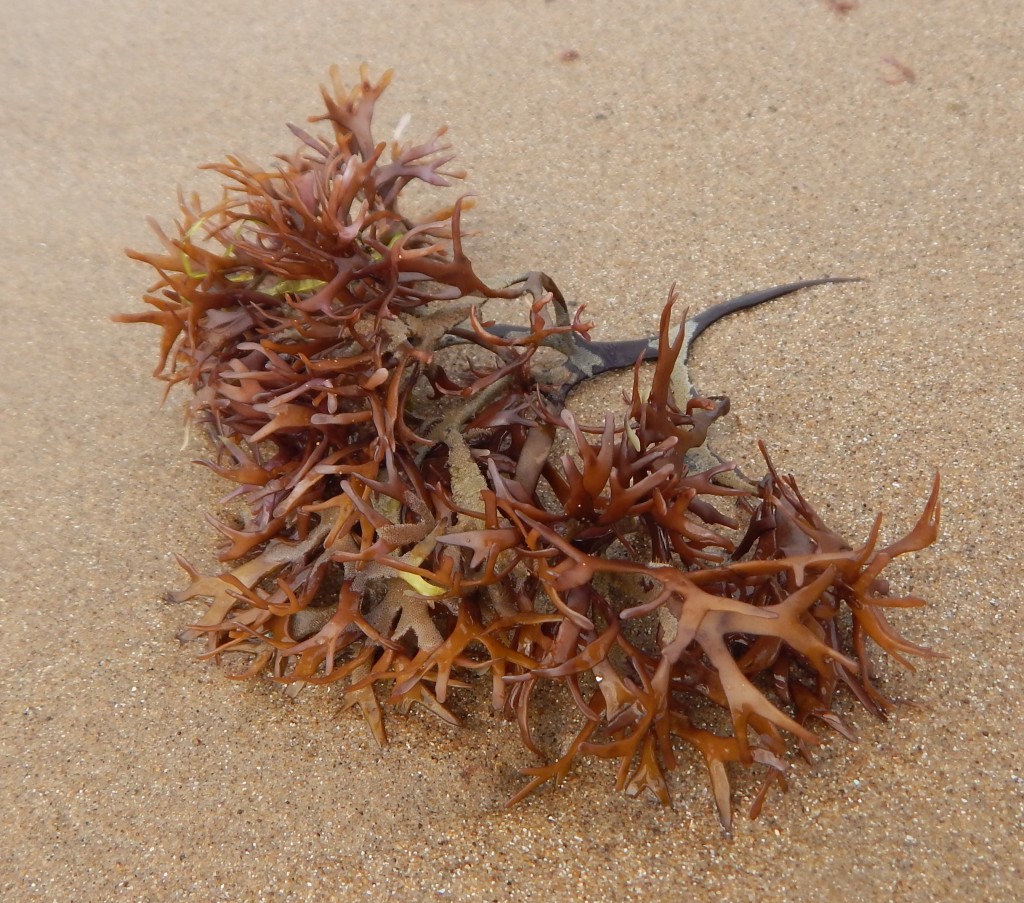
[079] Chondrus crispus, Irish Moss and Red Algae
Introduction
Chondrus crispus, Irish Moss or Carrageen Moss, is a Red Alga found at inter-tidal levels round the coasts of Ireland and other European locations. Despite its name it has nothing to do with moss. I will consider all Red Algae in this blog. [Technically algae is the plural of alga but I may use it as a singular, either countable or uncountable.]
Taxonomy
Kingdom – Plants
Division – Rhodophyta (Red Algae)
Class – Floridophyceae
Order – Gigartinales
Family – Gigartinaceae
Genus – Chondrus
Scientific Name – Chondrus crispus
See the note below about Seaweed.
Name
The word moss has a much wider meaning informally than its botanical definition. There are many examples of algae, lichen etc. being called moss. Carrageen comes from the Irish name of this organism, carraigin, meaning little rock. Chondrus comes from the Ancient Greek khondrus, ‘cartilage.’ from the gelatinous substance it produces when boiled. The Latin crispus means ‘curly.’
Seaweed
Seaweed is a vague sort of term and it can include some species of flowering plants that just happen to live in the sea. But generally, everything we think of as seaweed is either Brown Algae, Red Algae or Green Algae. Whether they are actually plants is a matter of opinion and scientists have different views depending on how they define Plants.
They may talk of Land Plants, which excludes them all, or they may include Green Algae; or Green and Red Algae; or all three. It doesn’t really matter.
We will meet [151] Brown Algae and [352] Green Algae later but my randomizing order of posts brings us first to Red Algae. This post will briefly consider them all.
Red Algae
There are about 7 000 species of Red Algae. 95% of known species of Red Algae are include in the class Florideophyceae, sometimes demoted to a subclass, Florideae.
I won’t say anything about the anatomy or physiology of algae and I will avoid the technical words like stipe, holdfast, lamina and frond. You are unlikely to find any of these organisms other than below the high-tide level on the coast. There natural environment is underwater so anything found on a beach may be dead or dried out. You may need microscopic examination to determine the species.
Irish Moss
As for most red algae, the colour of Chondrus crispus is variable. It can be any colour from yellow-green through red to purple-brown. Superficially it looks much the same as all other algae that you may find at the edge of the sea.

When boiled in water it forms a jelly. This consists mostly of carrageenans, a group of chemicals widely used in the food industry as gelling, thickening and stabilizing agents, and as vegan alternatives to gelatin. They have been used since about 600 BC in China, and since 400 AD in Ireland. Now production, mostly in the Philippines generally uses other species of red algae.
Habitat and use
Chondrus crispus is common on the coasts of Ireland and other Atlantic coasts. It normally attaches to rocks from the middle of the zone between high and low tides down to the sea floor.
It is used to produce carrageenan, known in the EU as E407 or E407a and used for example in making ice-cream or fining beer or wine.
In Asia, South America and the Caribbean it used to make jelly-like desserts. In Ireland and parts of Scotland it is boiled in milk and flavoured with vanilla, cinnamon, brandy or whisky to make something like blancmange or pannacotta.
Other Notes
All my pictures of Algae come from a visit to the Isle of Wight recently and were found on the beach – either at the high tide level or lower.
They were identified with an identification app and using information from the Internet, and most of my initial identifications were wrong. I have been helped by groups on Social Media sites and I am confident of the title picture as Chondrus crispus. For my remaining pictures I will give a possible identification where I have one but I won’t say any more about other species.
These are Furcellaria lumbricalis, used commercially for carrageenan; Gracilaria sp, used as food, to produce gelatin and in aquariums; Halopiythys incurva; and Osmundea sp.



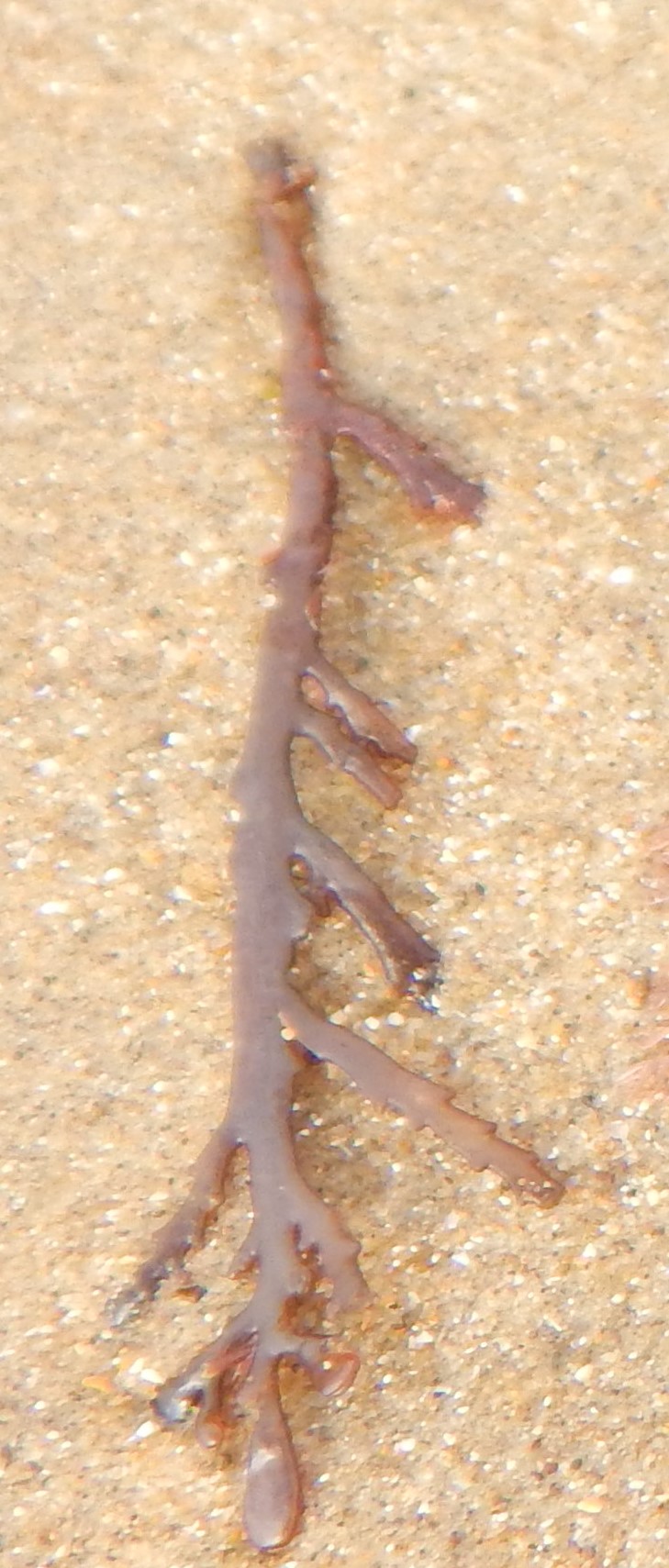
The following are unidentified. Some of them may possibly be brown algae!

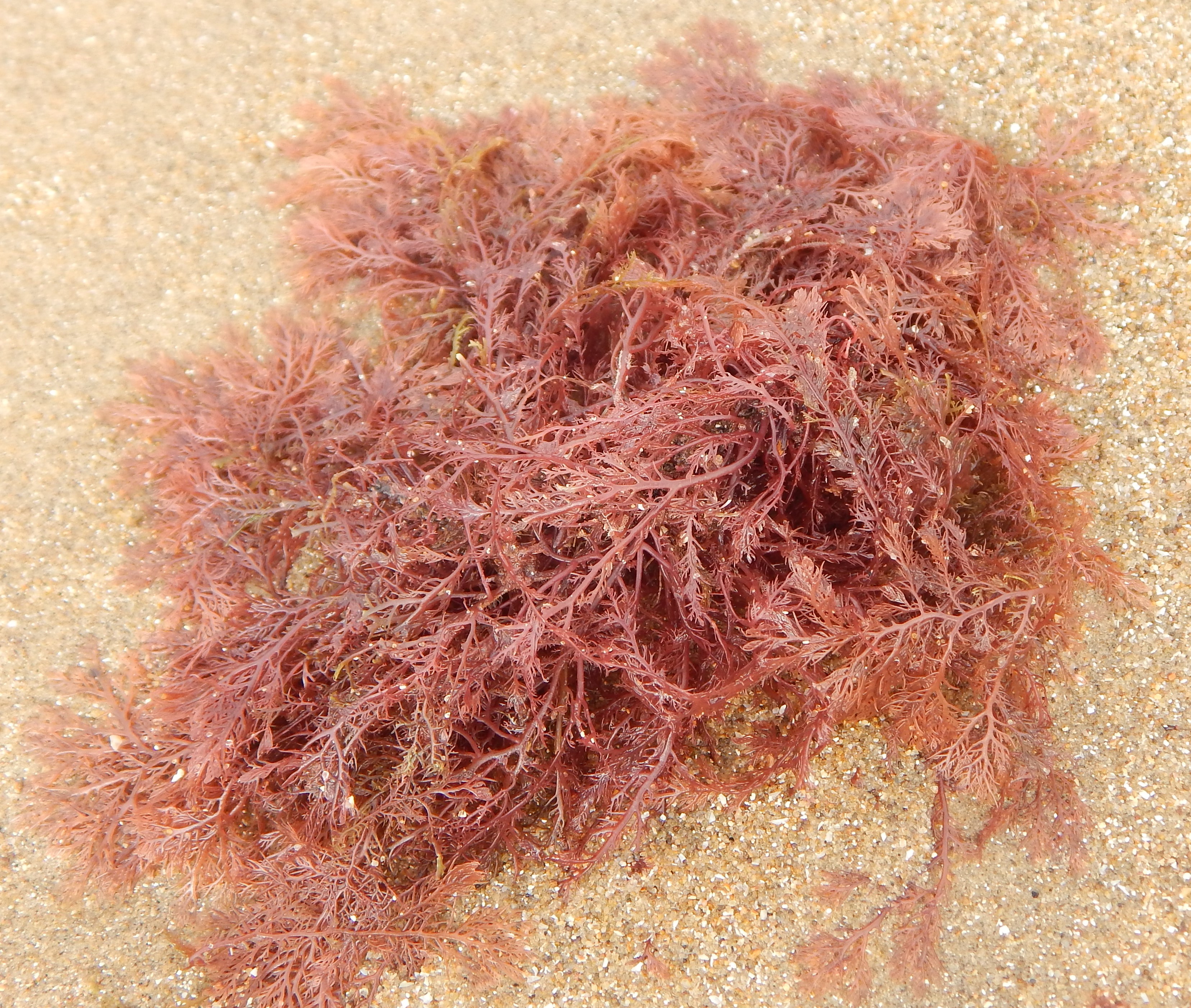
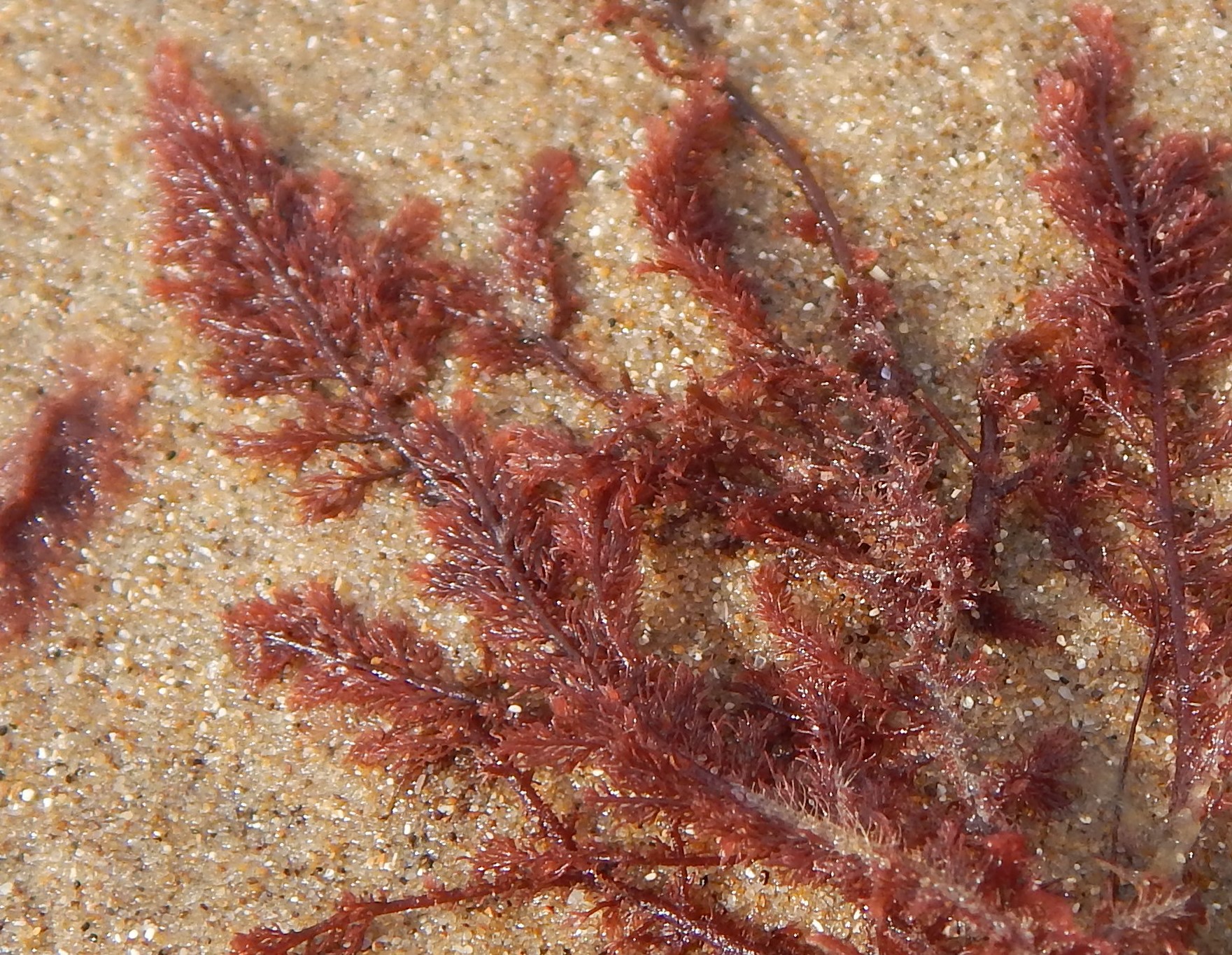
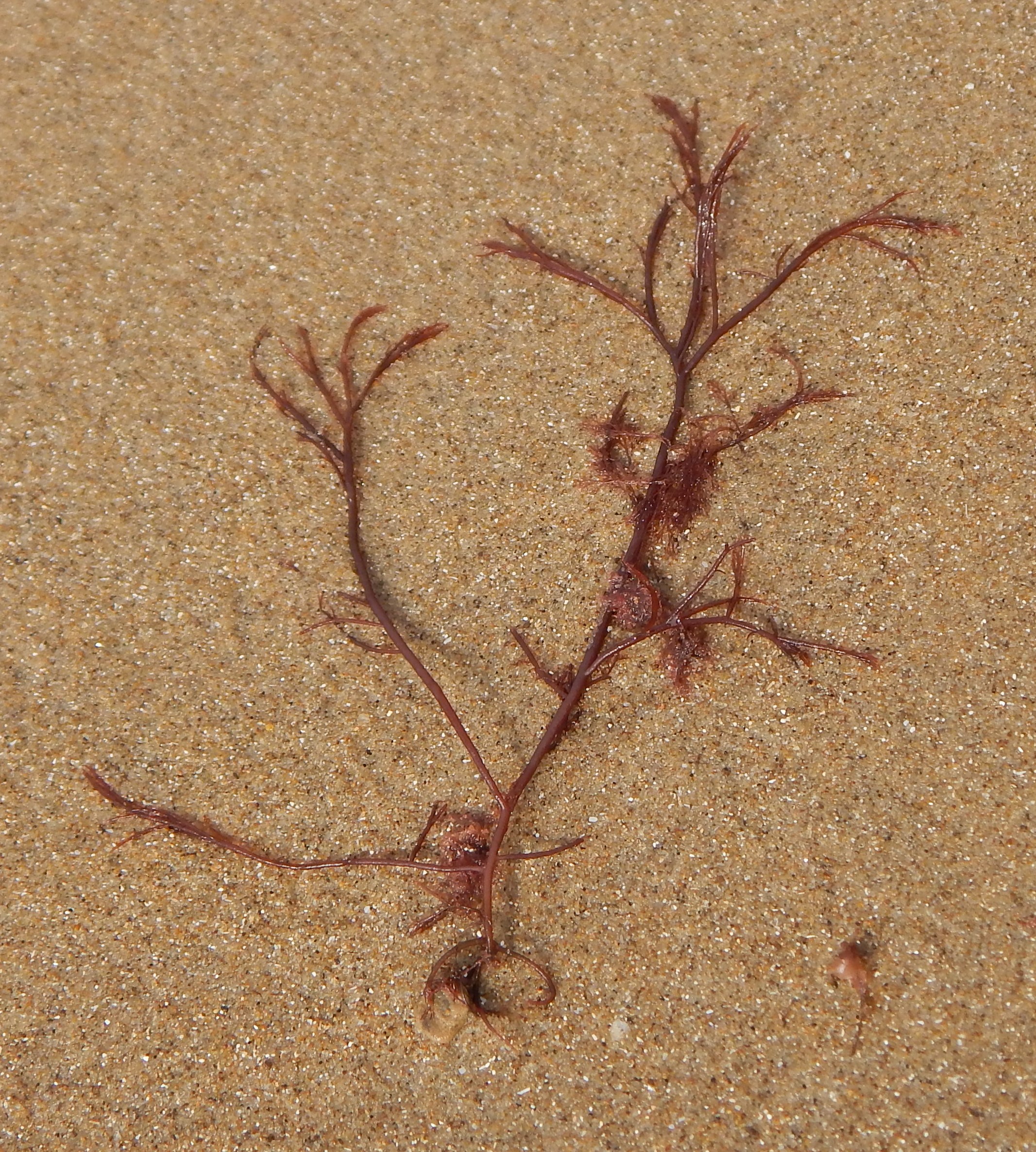

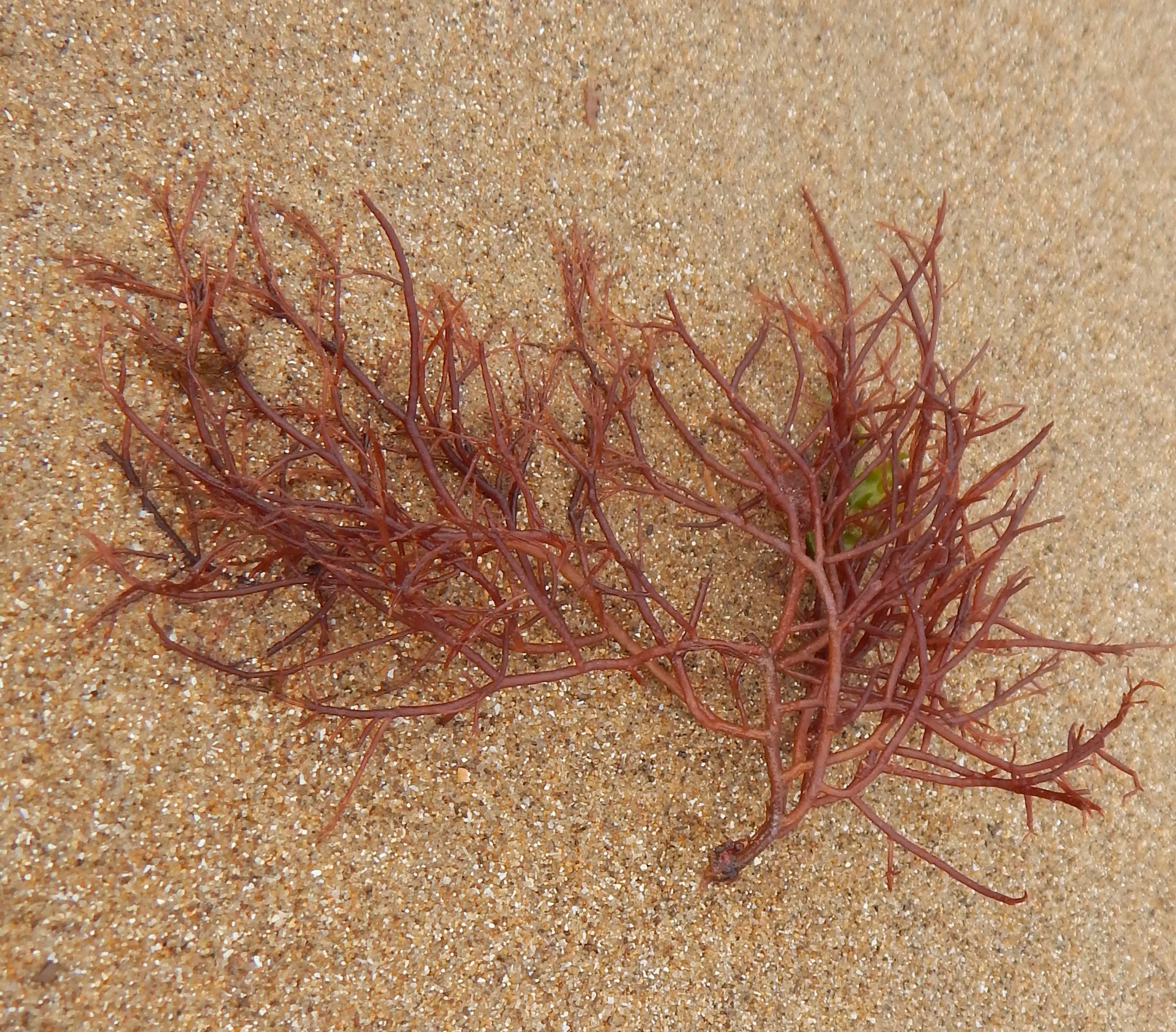
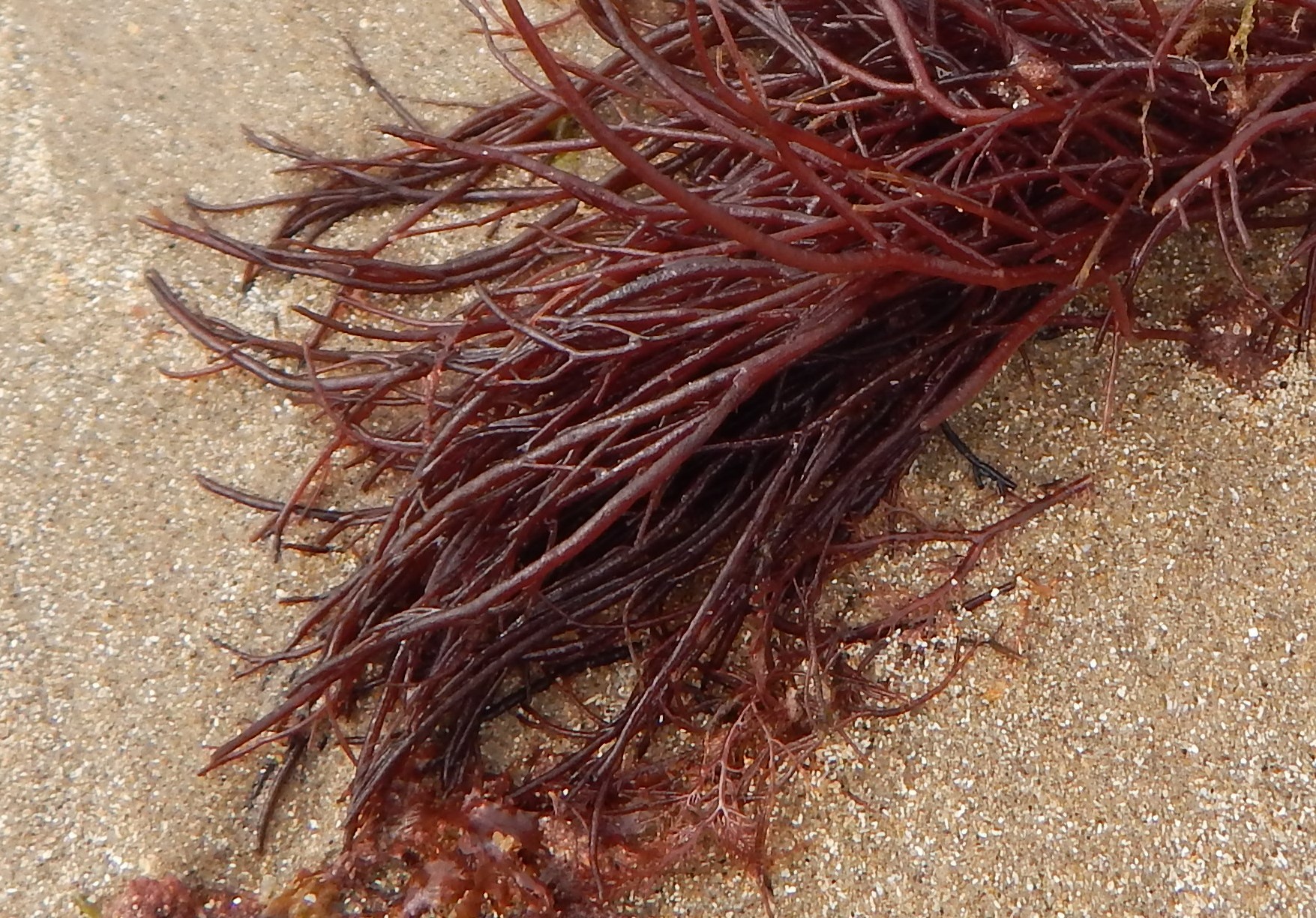

See also
Two more generic posts will consider [151] Brown Algae and [352] Green Algae.
